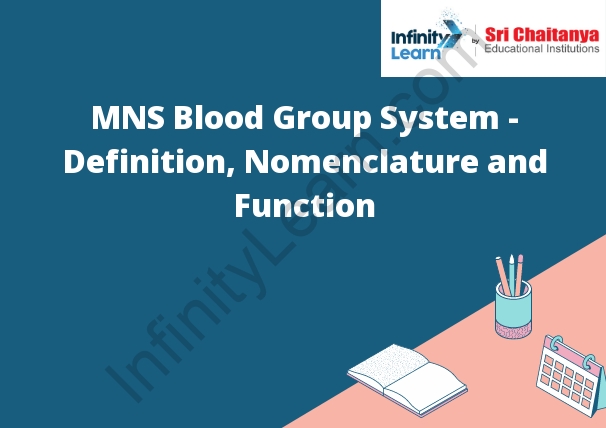Table of Contents
Definition of MNS Blood Group System
The MN blood group system is a blood group system that is determined by the presence or absence of two antigens, M and N, on the red blood cells. The MN blood group system is a minor blood group system.

MNSs Blood Group Nomenclature:
The MNSs blood group nomenclature system is a blood group classification system that relies on the presence or absence of two antigens, M and N, on the surface of red blood cells. This system is used to classify blood into eight different blood groups: A, B, AB, and O, as well as the four MNSs blood groups: MN, NM, NN, and MM.
The Function of MNS Antigen:
MNS antigen is a glycoprotein that is found on the surface of erythrocytes. It is responsible for the recognition and binding of erythrocytes to the endothelium of the small vessels in the spleen. The function of MNS antigen is to prevent the erythrocytes from being sequestered in the spleen.
MNS antigen is a glycoprotein found on the erythrocyte membrane. It is composed of two subunits, M and N, which are encoded by different genes. The M subunit is the major subunit and is responsible for the antigen’s function. The N subunit is not essential for the antigen’s function, but is necessary for its assembly.
MNS antigen is involved in the immune response to red blood cells. It is recognized by antibodies called anti-M and anti-N, which are produced by the immune system in response to foreign red blood cells. The anti-M antibody binds to the M subunit, while the anti-N antibody binds to the N subunit. This interaction between the antibody and the antigen triggers the immune system to destroy the foreign red blood cells.
MNS antigen is also involved in the blood group system. The A and B blood groups are determined by the presence or absence of the M and N subunits, respectively. The MNS antigen is also responsible for the Rh blood group. The Rh blood group is determined by the presence or absence of the RhD antigen, which is a variant of the MNS antigen.
Molecular Data of MN Blood Group
There are four common blood types (A, B, AB, O) and each is determined by a specific antigen on the surface of red blood cells. The MN blood group is determined by the presence of the MN antigen. The MN antigen is a protein that is found on the surface of red blood cells. It is inherited as a recessive trait. If both parents have the MN antigen, their child will have the MN blood group. If one parent has the MN antigen and the other parent does not, their child will have the blood group A, B, AB, or O, depending on the other parent’s blood type.
The MN blood group is a rare blood group that is found in less than 1% of the population. The MN blood group is a result of the combination of the M and N blood group antigens. The M antigen is found on the surface of red blood cells and is responsible for the M blood group. The N antigen is found in the blood plasma and is responsible for the N blood group. The MN blood group is also known as the M/N blood group.
Explain in detail :
The MNS blood group system is a blood group system that is used to identify blood groups. The system uses the letters M, N, S, and P to identify blood groups. The M blood group is the most common blood group in the world. The N blood group is the second most common blood group in the world. The S blood group is the third most common blood group in the world. The P blood group is the fourth most common blood group in the world.







